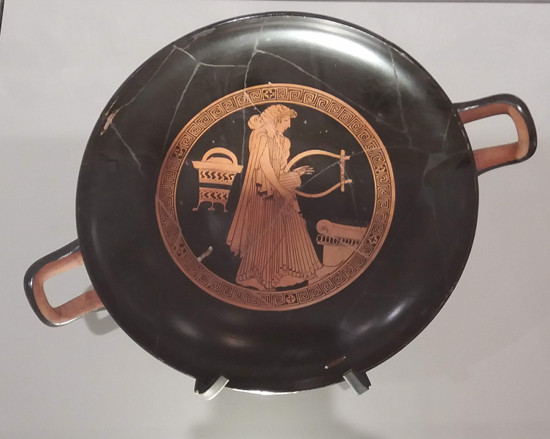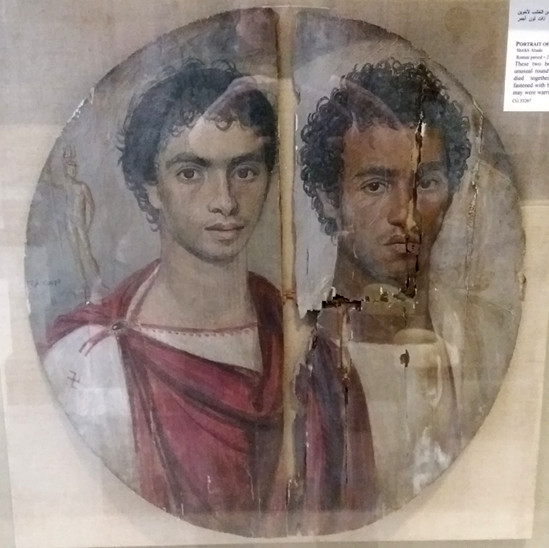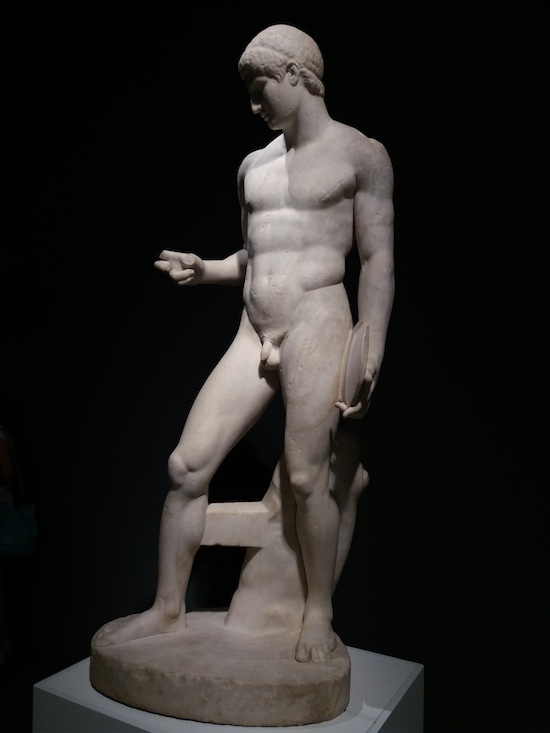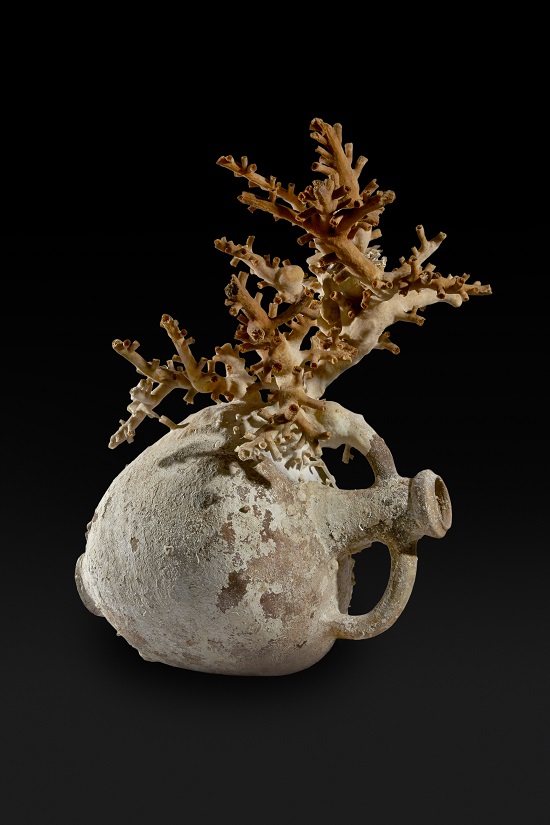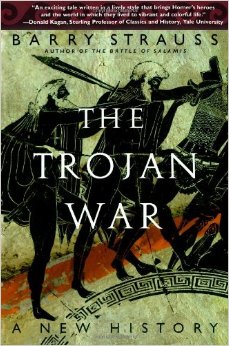Greco-Roman Mummy Masks in the Egyptian Museum
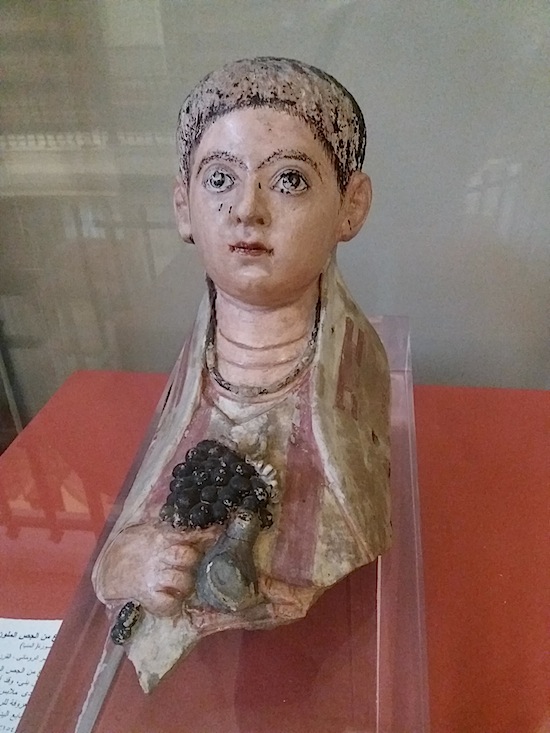
Mask of a boy named Heraklion, Roman Period 2nd century AD.
This painted plaster mask covered the head and chest of the
mummy. Heraklion offers a bunch of grapes to a small bird.
Visitors to Egypt tend to want to see the great sites of the Old, Middle, and New Kingdoms. The pyramids, the Valley of the Kings, and the splendid temples around Luxor are all well worth a visit, but Egypt’s later periods are of interest as well. I just went on one of my semi-regular trips to Egypt with the specific intent to study the Greco-Roman period. It plays a role in the third book in my Masked Man of Cairo neo-pulp series and there’s no better inspiration than actually seeing the sites and artifacts themselves.
